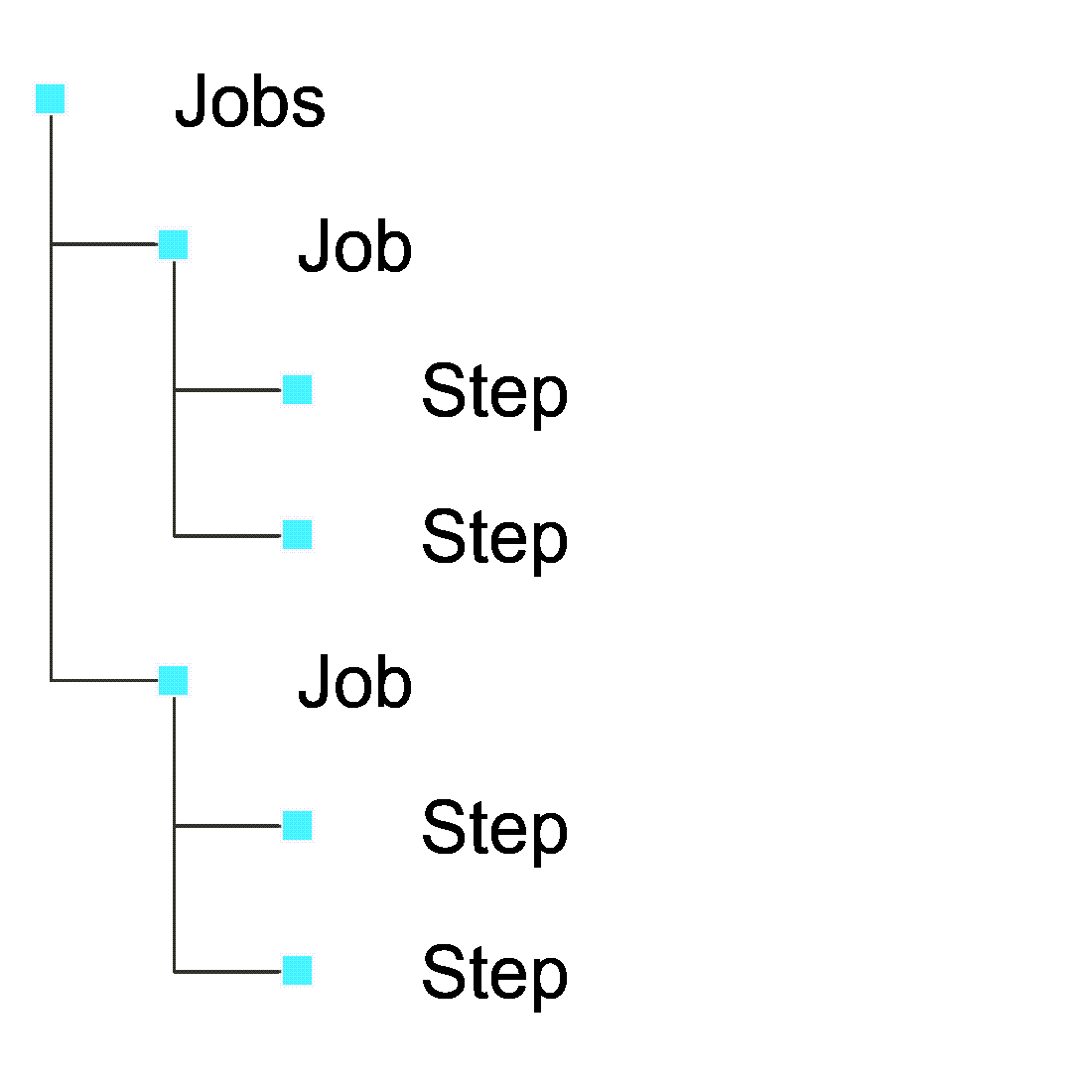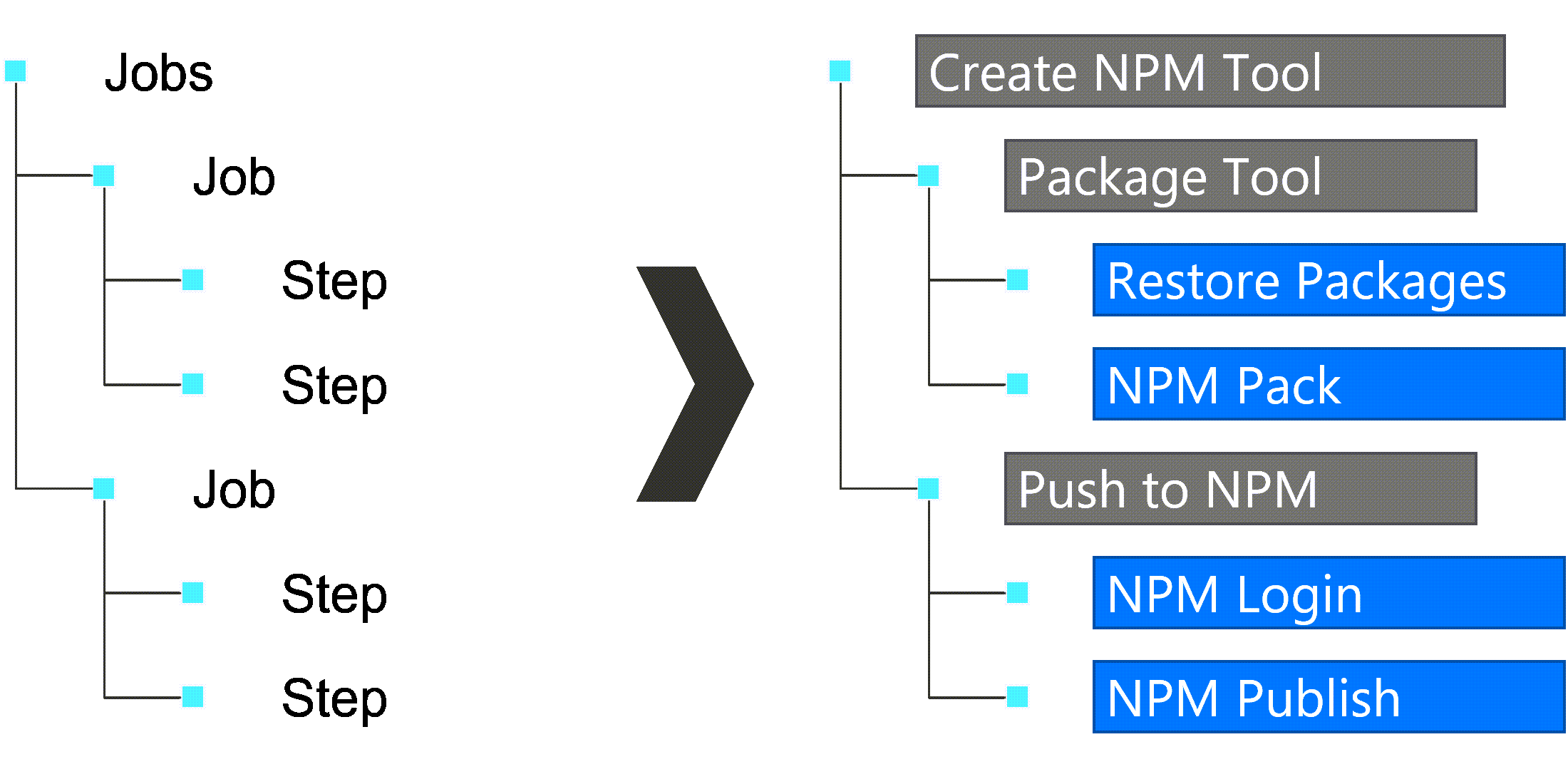About the presenter
Presenter Name
☁️ Presenter Title
For questions or help with this series: msusdev@microsoft.com
All demos and source code available on GitHub:
Series road map
- Session 1:
- ↪️ Introduction to GitHub Actions
- Session 2:
- Automatically build and test your code with GitHub Actions
- Session 3:
- Deploy your code to Azure with GitHub Actions
Today’s agenda
- What are GitHub Actions?
- Learn the YAML syntax
- Building a simple project
::: notes
Learn how GitHub Actions enable you to automate your software development cycle for code hosted in GitHub. We’ll walk you through using everyday actions in your first workflow. You’ll learn how to:
- Create a workflow
- Add actions to a workflow
- Trigger the workflow
:::
What are GitHub Actions?
- Packaged workflows
- Automates common build, test, and deployment actions
- Highly configurable and extendable
- Supports an open marketplace of free and paid tools
- Includes a rich user interface system native in GitHub
Anatomy of a workflow

Example of a workflow

Demo: Configuring a workflow to check the build environment
::: notes
-
Start with an empty GitHub repository
-
Create a .github/workflows/build.yml file
Note: The name of this file is arbitrary. For the remainder of this demo, we will assume you named this file build.yml.
-
In the build.yml file, add and validate:
on: push -
Add and validate:
on: push jobs: first-job: -
Add and validate:
on: push jobs: first-job: steps: - run: node --version - run: npm --version -
Add and validate:
on: push jobs: first-job: runs-on: windows-latest steps: - run: node --version - run: npm --version
:::
Configuring the workflow environment
- Trigger
- Uses the
onkeyword - Specifies the triggering event (ex.
push,pull_request) - Filters to specific branches or tags
- Uses the
- Environment (optional)
- Uses the
envkeyword - Configures environment variables
- Uses the
Configuring the job-specific workflow environment
- Runs on
- Uses the
jobs.runs-onkeyword - Chooses between a GitHub or self-hosted runner
- For GitHub-hosted runners, specifies an operating system (ex.
windows-2019,macos-11,ubuntu-20.04)
- Uses the
- Container (optional)
- Uses the
jobs.containerkeyword - Chooses a container, from Docker Hub, to use as the workflow environment
- Hosted on the machine specified in
jobs.runs-on
- Uses the
Demo: Customizing the workflow environment
::: notes
-
In the .github/workflows/build.yml file, add and validate:
on: push jobs: first-job: runs-on: ubuntu-latest steps: - run: node --version - run: npm --version -
Add and validate:
on: push jobs: first-job: runs-on: ubuntu-latest container: node:17.6.0 steps: - run: node --version - run: npm --version -
Add and validate:
on: push jobs: first-job: runs-on: ubuntu-latest container: node:14 steps: - run: node --version - run: npm --version -
Add and validate:
name: Node Continuous Integration on: push jobs: build-node: name: Build Node runs-on: ubuntu-latest container: node:14 steps: - run: node --version - run: npm --version -
Add and validate:
Warning: This step won’t work as expected since there’s nothing to “install” from NPM due to a missing package.json file
name: Node Continuous Integration on: push jobs: build-node: name: Build Node runs-on: ubuntu-latest container: node:14 steps: - run: node --version - run: npm --version - run: npm install
:::
Sourcing GitHub Actions
- Any action can be created in a GitHub repository and surfaced through the marketplace as a paid or free action
- Actions are referenced using the typical org-name/repo-name syntax
Example: Checkout action
Checks-out the code in the current repository for use in the workflow
- Actions organization
- Checkout repository
- Latest version is V2
Using marketplace actions in a workflow
- Reference action using the
useskeyword -
Optionally, configure action properties using the
withkeyword- uses: org-name/repo-name@v0 with: property: value
Example: Using Checkout action
- uses: actions/checkout@v2
Example: Upload Build Artifact action
github.com/actions/upload-artifact
Uploads build artifacts from the workflow to access after the workflow is complete
- Actions organization
- Upload-Artifact repository
- Latest version is V2
Example: Using Upload Build Artifact action
- uses: actions/upload-artifact@v2
with:
name: my-artifact
path: path/to/artifact/
Demo: Node Continuous Integration
::: notes
-
Create a simple node project:
console.log('Hello, world!');node_modules/ package-lock.json{ "name": "simple", "main": "app.js" } -
In the .github/workflows/build.yml file, add and validate:
name: Node Continuous Integration on: push jobs: build-node: name: Build Node runs-on: ubuntu-latest container: node:14 steps: - run: node --version - run: npm --version - uses: actions/checkout@v2 - run: dir -
Add and validate:
name: Node Continuous Integration on: push jobs: build-node: name: Build Node runs-on: ubuntu-latest container: node:14 steps: - run: node --version - run: npm --version - uses: actions/checkout@v2 - run: npm install -
Add and validate:
name: Node Continuous Integration on: push jobs: build-node: name: Build Node runs-on: ubuntu-latest container: node:14 steps: - run: node --version - run: npm --version - uses: actions/checkout@v2 - run: npm install - run: node app.js -
Review workflow output
-
Add and validate:
name: Node Continuous Integration on: push jobs: build-node: name: Build Node runs-on: ubuntu-latest container: node:14 steps: - run: node --version name: Check Node Version - run: npm --version name: Check NPM Version - uses: actions/checkout@v2 name: Checkout Code - run: npm install name: Install NPM Packages - run: node app.js name: Run Application -
Update Node project:
npm install --save momentconsole.log('Hello, world!'); var moment = require('moment'); var date = moment().format('LL'); console.log(date); -
Review workflow output after project has been updated
:::
Reviewing today’s session
- GitHub Actions
- YAML syntax
- Building projects
Reference Links
- https://docs.github.com/actions/learn-github-actions/introduction-to-github-actions#understanding-the-workflow-file
- https://hub.docker.com/_/node
- https://github.com/actions/checkout